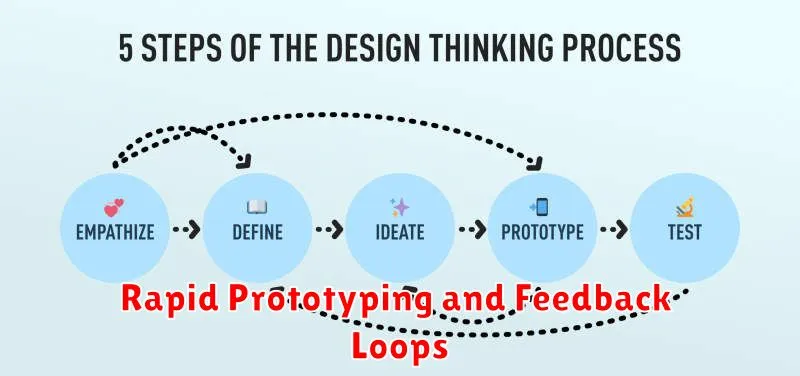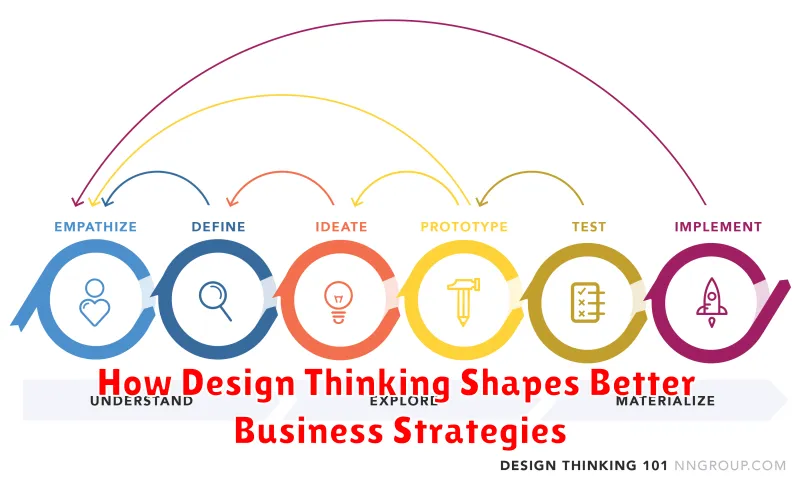In today’s rapidly evolving business landscape, design thinking has emerged as a powerful tool for shaping better business strategies. It’s no longer enough to simply offer a product or service; businesses must understand the needs and desires of their target audience on a deeper level. Design thinking provides a human-centered approach to problem-solving, enabling businesses to develop innovative solutions that truly resonate with customers and drive sustainable growth. By embracing the principles of design thinking, organizations can gain a competitive edge in the market and build stronger customer relationships. This article will explore how design thinking can transform business strategies, leading to increased profitability and long-term success.
From ideation and prototyping to testing and implementation, design thinking offers a structured framework for strategic decision-making. By emphasizing empathy and collaboration, this human-centered approach allows businesses to uncover unmet needs and develop creative solutions that address those needs effectively. Whether you are a startup or an established enterprise, incorporating design thinking into your business strategy can be a game-changer. Learn how to leverage design thinking principles to create customer-centric products and services, optimize business processes, and ultimately achieve better business outcomes.
What Is Design Thinking?
Design thinking is a human-centered, problem-solving approach used to develop innovative solutions. It’s not just for designers; businesses across various sectors utilize it to create products, services, and strategies that truly meet customer needs.
This iterative process emphasizes understanding user needs, challenging assumptions, and redefining problems. It encourages experimentation and rapid prototyping to arrive at effective and user-friendly solutions.
Empathy-Driven Strategy Planning
A core tenet of design thinking is empathy. Empathy-driven strategy planning shifts the focus from purely business objectives to understanding the needs, desires, and pain points of the target audience.
By deeply understanding the user, businesses can craft strategies that truly resonate. This approach leads to the development of products, services, and experiences that are not only desirable but also address genuine user needs. This fosters stronger customer relationships and ultimately drives sustainable business growth.
Ideation and Creative Problem Solving
Ideation, a core component of design thinking, focuses on generating a wide range of potential solutions. This process encourages “out-of-the-box” thinking, pushing beyond obvious solutions to explore innovative possibilities. It involves diverse perspectives and collaborative brainstorming to maximize creative output.
This stage aims to tackle problem-solving creatively. By understanding user needs and pain points uncovered in the empathize stage, the ideation process can address these challenges effectively. Techniques like brainstorming, mind mapping, and sketching help visualize and refine potential solutions, leading to more impactful and user-centered outcomes.
Rapid Prototyping and Feedback Loops

Rapid prototyping is a crucial element of design thinking. It involves creating tangible representations of ideas, whether they are physical products, software interfaces, or service experiences. These prototypes don’t need to be perfect, but they should be functional enough to gather user feedback.
This leads to the second key component: feedback loops. By testing prototypes with target users and gathering their responses, designers can identify potential flaws and areas for improvement early in the development process. This iterative process of prototyping, testing, and refining leads to more user-centered and effective solutions.
Aligning with Real Customer Needs
A core tenet of design thinking is deep empathy for the customer. This involves moving beyond assumptions and truly understanding their needs, pain points, and motivations. Effective strategies emerge from a thorough understanding of the customer’s reality.
This alignment requires direct engagement with customers through user research methods like interviews, observations, and surveys. Analyzing this data reveals valuable insights into their unmet needs and informs the development of solutions that genuinely resonate.
Collaborative, Cross-Team Development
Design thinking thrives on diverse perspectives. Collaboration across teams—engineering, marketing, sales, and customer service—is crucial. This cross-functional approach ensures the developed solutions are not only user-centric but also feasible and viable from a business standpoint.
Breaking down silos fosters a shared understanding of the problem and facilitates the generation of more creative and robust solutions. Team members bring unique skills and insights to the table, enriching the design thinking process and ultimately leading to more impactful outcomes.
Reducing Time to Market
Design thinking’s iterative nature plays a crucial role in reducing time to market. By emphasizing rapid prototyping and testing, businesses can identify potential issues and refine their products or services early in the development process. This feedback-driven approach helps avoid costly revisions later on, ultimately leading to a faster launch.
Furthermore, the collaborative nature of design thinking fosters efficient communication between teams, minimizing misunderstandings and delays. By involving stakeholders from various departments throughout the process, organizations can ensure everyone is aligned, accelerating development and reducing time to market.
Measuring Innovation Impact
Measuring the impact of innovation is crucial for understanding its effectiveness and justifying further investment. It moves beyond simply launching new products or services and focuses on quantifying the value created.
Key performance indicators (KPIs) should be established early in the design thinking process. These KPIs should be aligned with business objectives and track metrics such as revenue growth, market share increase, customer satisfaction improvement, or cost reduction.
Data analysis plays a vital role in assessing the impact. By tracking and analyzing data related to the chosen KPIs, organizations can gain insights into the true impact of their innovation initiatives and make informed decisions for future development.
Design Thinking in Strategic Planning
Design thinking plays a crucial role in shaping effective business strategies. It introduces a human-centered approach to problem-solving, ensuring strategies address real user needs. By emphasizing empathy and experimentation, design thinking helps organizations develop innovative solutions that resonate with their target audience.
Integrating design thinking into strategic planning involves several key stages. It begins with understanding the needs and motivations of users through research and observation. Next, the focus shifts to defining the core problem and ideating potential solutions. Prototyping and testing these solutions allows for iterative refinement based on user feedback, leading to more robust and user-centric strategies.
Case Studies from Leading Innovators

Examining real-world examples demonstrates the power of design thinking. This section explores how leading innovators leveraged design thinking to achieve significant business outcomes.
Case Study 1: A Transportation Company
By employing a human-centered approach, this company redesigned its mobile app interface. This resulted in a 20% increase in customer satisfaction and a 15% rise in app usage.
Case Study 2: A Healthcare Provider
This organization used design thinking to streamline patient intake processes. The result was a 30% reduction in patient wait times and improved staff efficiency.

